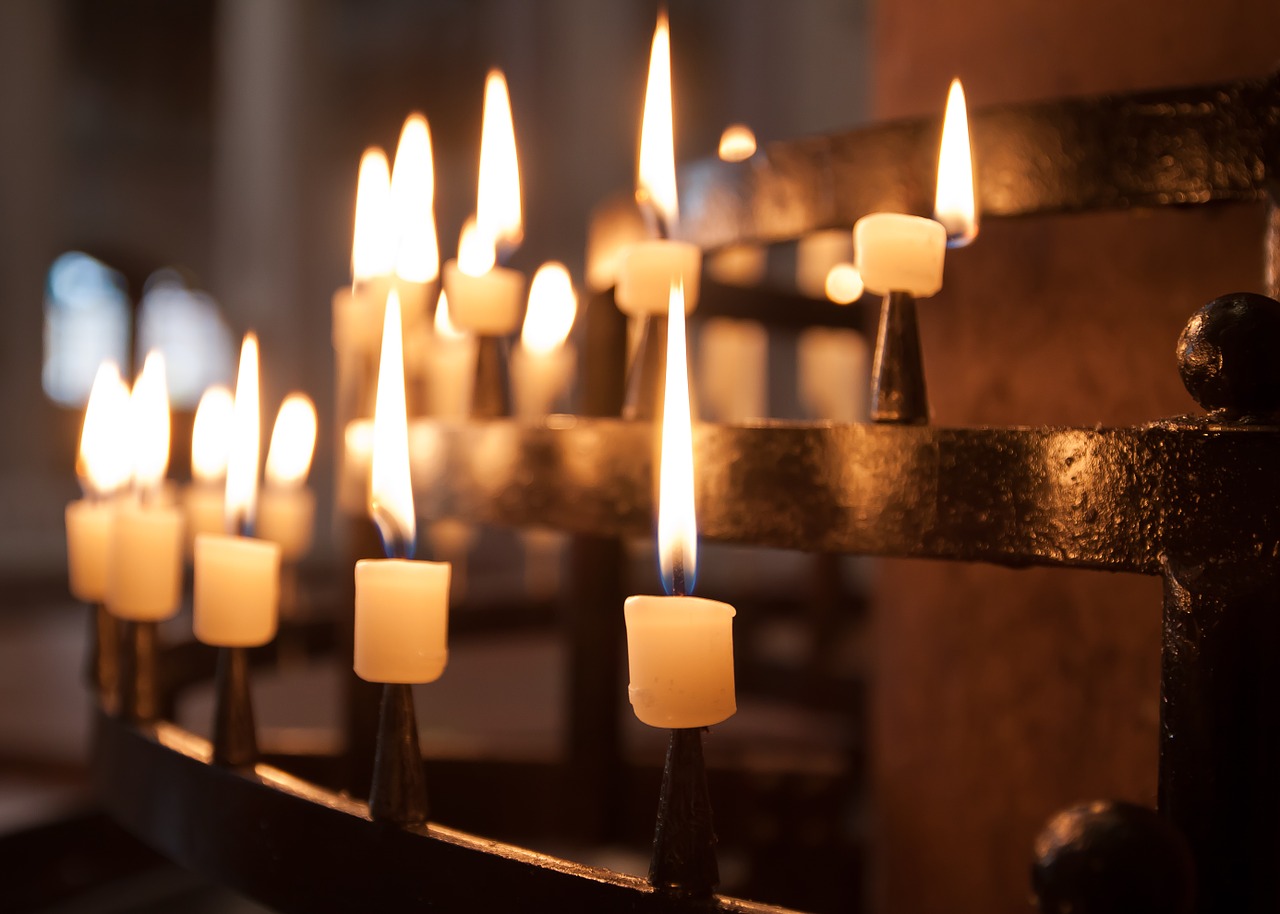Answered by Legionary of Christ Father Edward McNamara, professor of liturgy and dean of theology at the Regina Apostolorum university.
Q: I have a question regarding the paschal candle. I am in a small religious house, so we do not have an Easter candle to use during our Divine Office prayer. I think that the Easter candle is a symbol especially for a church or a big convent where laypeople come to join in the sisters’ praying of the Divine Office. That is we why do not need an Easter candle during Masses or the Divine Office in our house. But my other sisters insist on having one, so they ask to use the old Easter candle of a church from the previous year. They scrape off the number and use a sticker to change the number of the year. Is it licit to use an old Easter candle in this way? It is blessed, but not for this year. — T.M., Crosby, Texas
A: There have been some recent guidelines that offer guidance as to how to handle this particular situation. The need to have several Easter candles available even though there is only one Easter vigil celebration is becoming ever more common in cases where, for example, a priest has several parishes under his charge. In this case each parish requires an Easter candle for use at baptisms and funerals, but it has been possible to bless only one at the vigil Mass.
For example, the Committee on Divine Worship of the U.S. bishops’ conference makes the following suggestions in its «Eighteen Questions on the Paschal Triduum»:
“In the case of mission churches and cluster parishes, can multiple paschal candles be used for the Service of Light? The Roman Missal, not envisioning the pastoral situation of mission churches or cluster parishes, specifies that only one paschal candle is used. To accommodate the particular circumstances, the Secretariat of Divine Worship might suggest that the candles from the mission churches or other parish churches could be present at the Easter Vigil, having been prepared in advance, and blessed alongside the main candle (perhaps having Deacons or other representatives holding them). In keeping with the rubrics, for the lighting and procession only one candle should be lit (the principal one, or the one which will remain in that particular church). As the other candles in the congregation are lit, the other paschal candles could be lit and held (but not high, in order to maintain the prominence of the one principal candle) by someone at their place in the assembly. Once all the candles are extinguished after the singing of the Exsultet, the other paschal candles are put aside. On Easter Sunday morning, those candles could be taken to each of the missions and carried, lit, in the entrance procession at the first Mass at each church and put in place in the sanctuary.”
As this document reminds us, the liturgical books and guidelines insist very much that only one paschal candle be prepared for the celebration. For example, the 1988 Circular Letter on the preparation for Easter published by the Congregation for Divine Worship states:
«The paschal candle should be prepared, which for effective symbolism must be made of wax, never be artificial, be renewed each year, be only one in number, and be of sufficiently large size, so that it may evoke the truth that Christ is the light of the world. It is blessed with the signs and words prescribed in the Missal or by the Conference of Bishops.»
This insistence has to do with the symbolism involved of the one light of Christ, from which all the other candles are lit.
The solution proposed above does not have the force of law but does represent a fairly common sense solution to a real pastoral problem. However, it does not resolve all problems, and we could also take our cue from the norms in force before the Second Vatican Council.
At that time, if Mass or the Divine Office was celebrated at a side altar during Eastertide, it was permitted to use a second paschal candle provided it had been blessed and had the five grains of incense.
Therefore, as well as the solution proposed above, it is probably feasible for a pastor to privately bless and prepare the other candles at a convenient moment after the Easter vigil Mass and simply set them up in the other parishes before the first Mass with no particular ceremonies.
After all, even if the vigil Mass had been celebrated the night before, people attending Mass on Easter Sunday usually find the Easter candle already set up and no special ceremony is carried out.
It is appropriate, however, to incense the candle along with the altar at the beginning of Mass.
An analogous situation could apply to a convent or small chapel where the vigil Mass was not celebrated. It is preferable to have a new candle even if it is relatively short in size, as it would be scarcely consumed at all during the Masses and Offices of the paschal season.
Using an old candle is not the ideal, although it might be acceptable if it was adjusted in some way so as to almost become a new candle. This would require a bit more work than just scraping off the old year numbers; at the very least it would require removing the part most used so that a clean wick can be lit on Easter. If necessary, the decorations would need to be replaced entirely.
* * *
Readers may send questions to zenit.liturgy@gmail.com. Please put the word «Liturgy» in the subject field. The text should include your initials, your city and your state, province or country. Father McNamara can only answer a small selection of the great number of questions that arrive.

Pixabay.com - Foto-Rabe
LITURGY Q & A: Using Old Easter Candles
Fr. Edward McNamara Discusses What to Do If No Vigil Mass Is Celebrated


